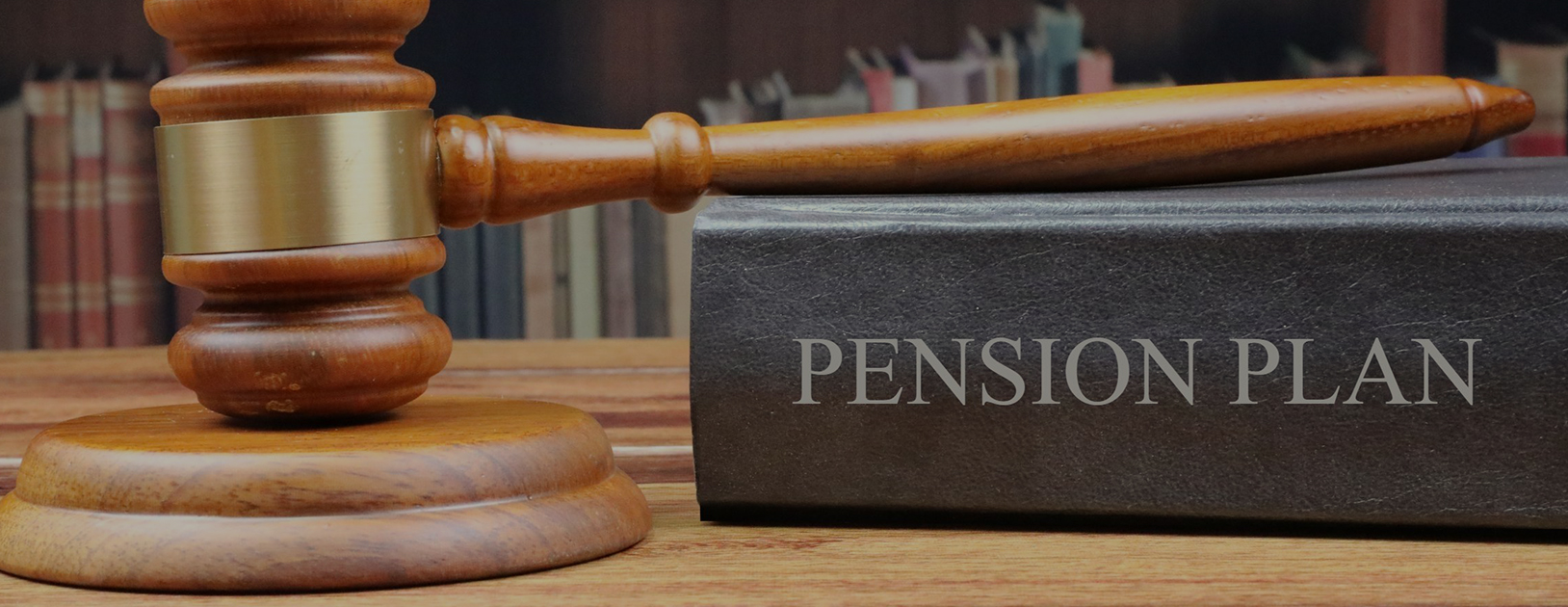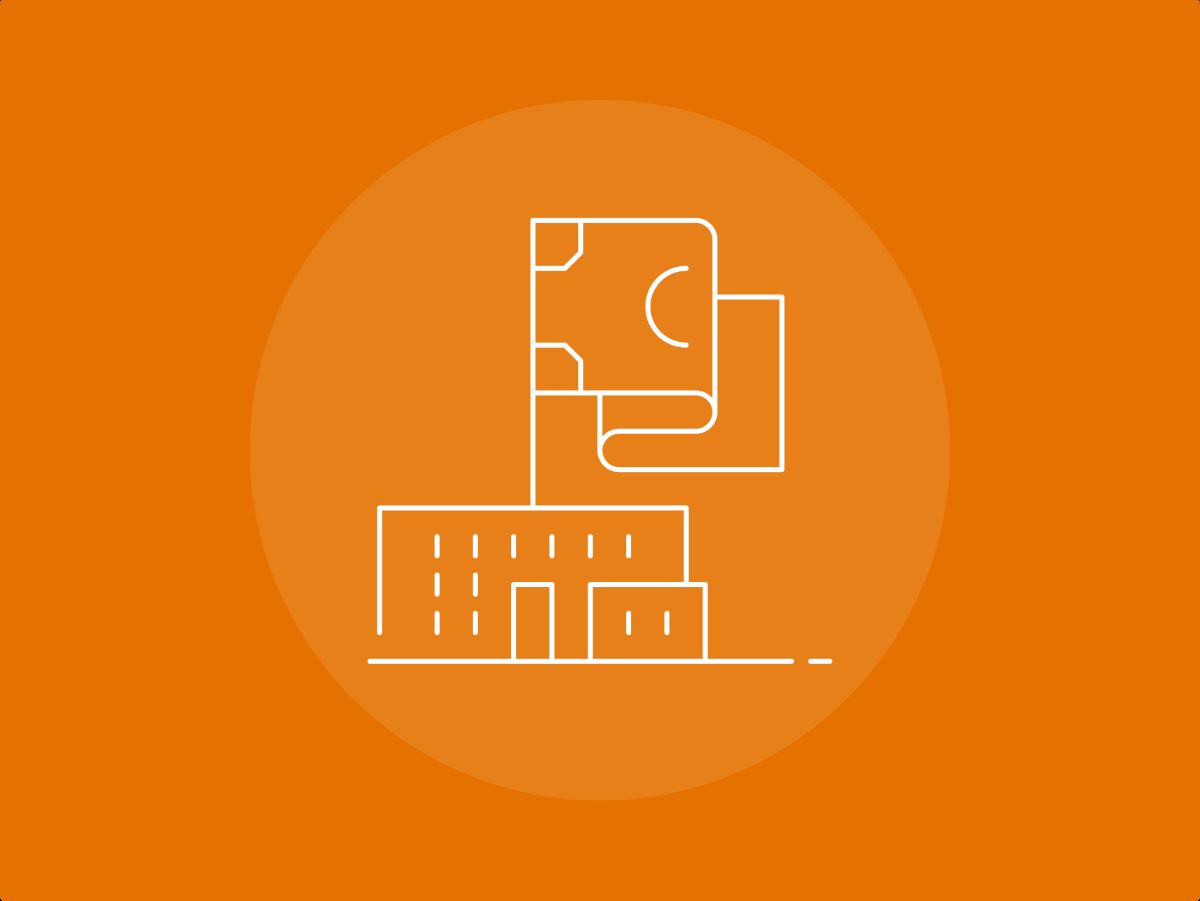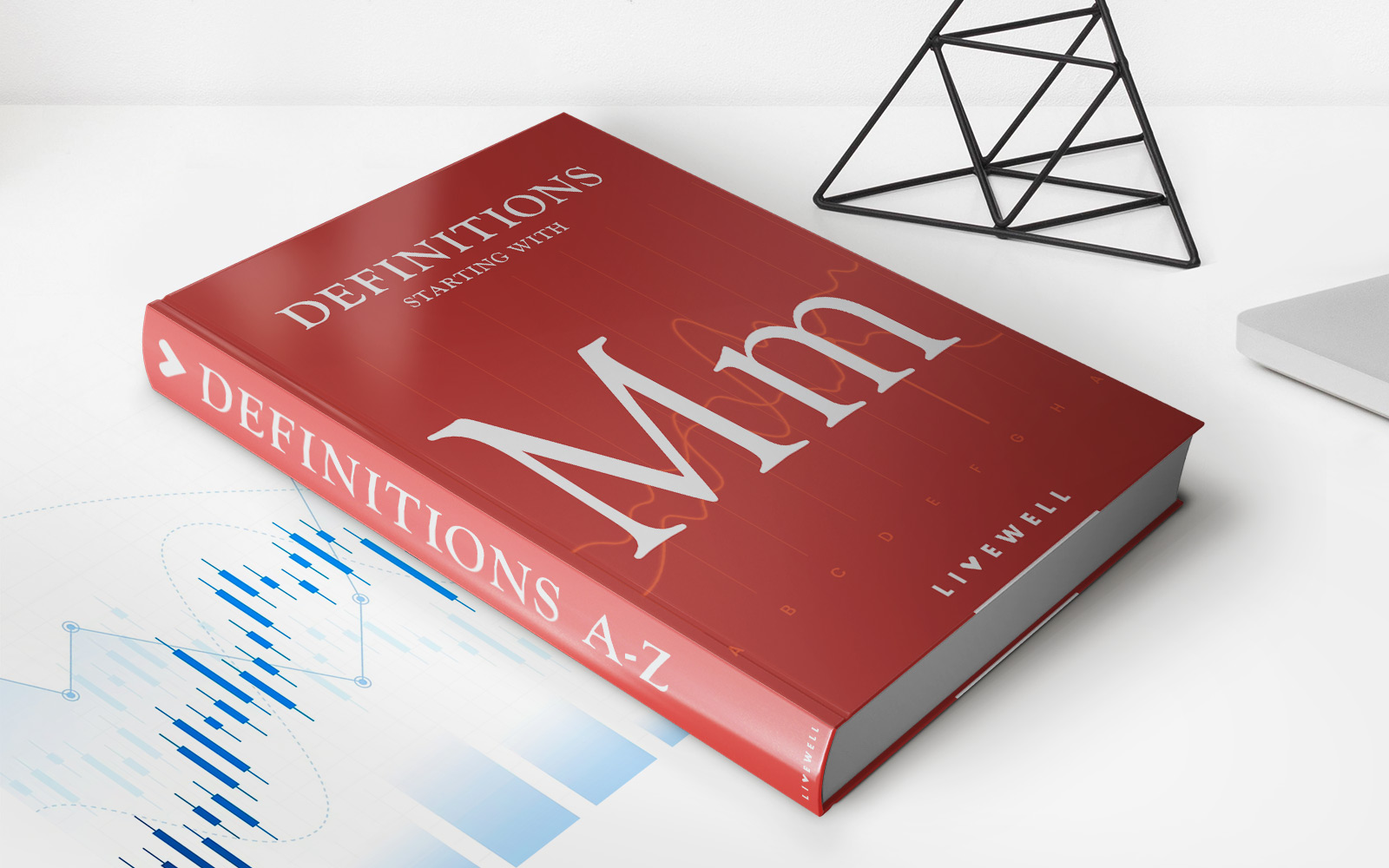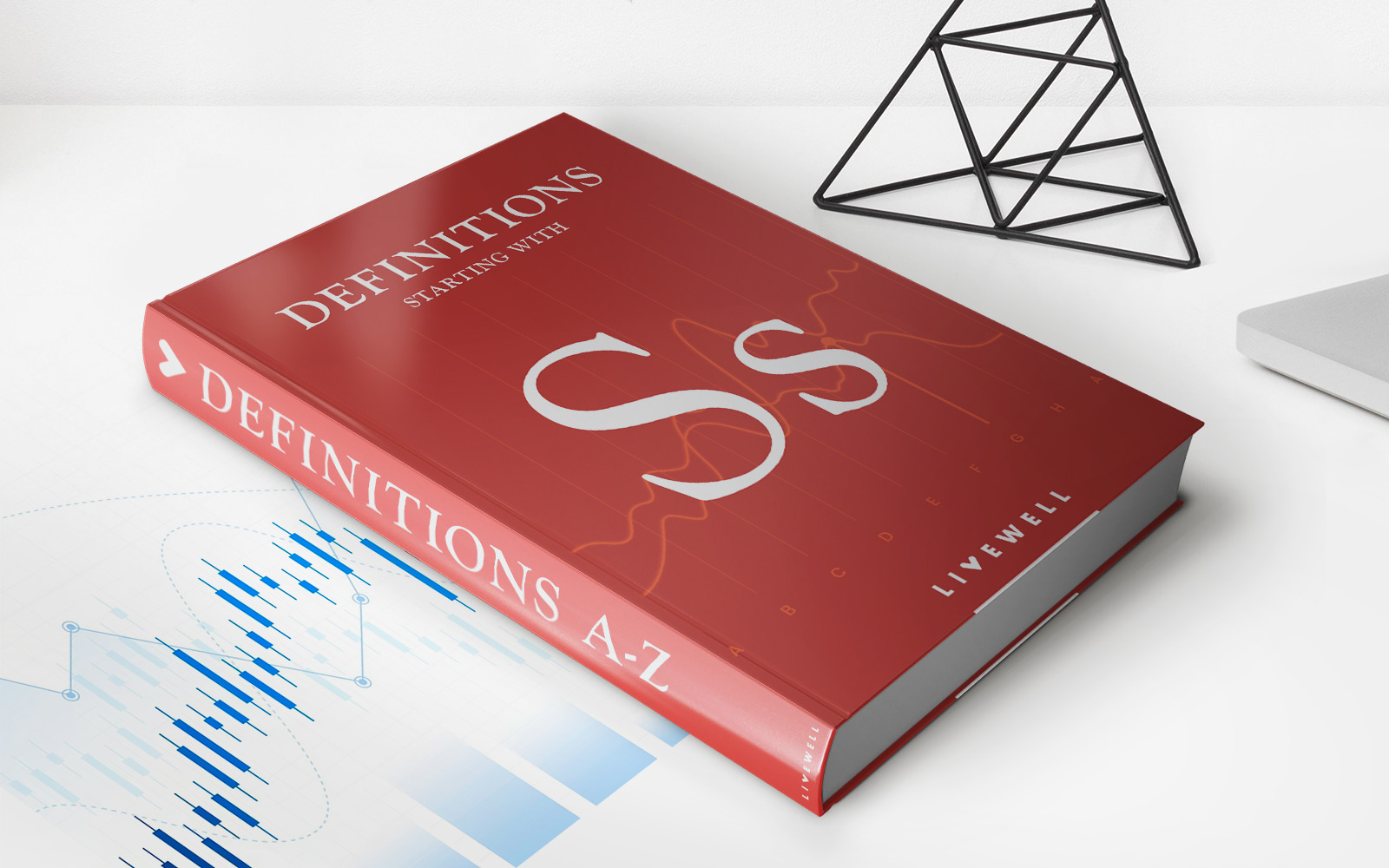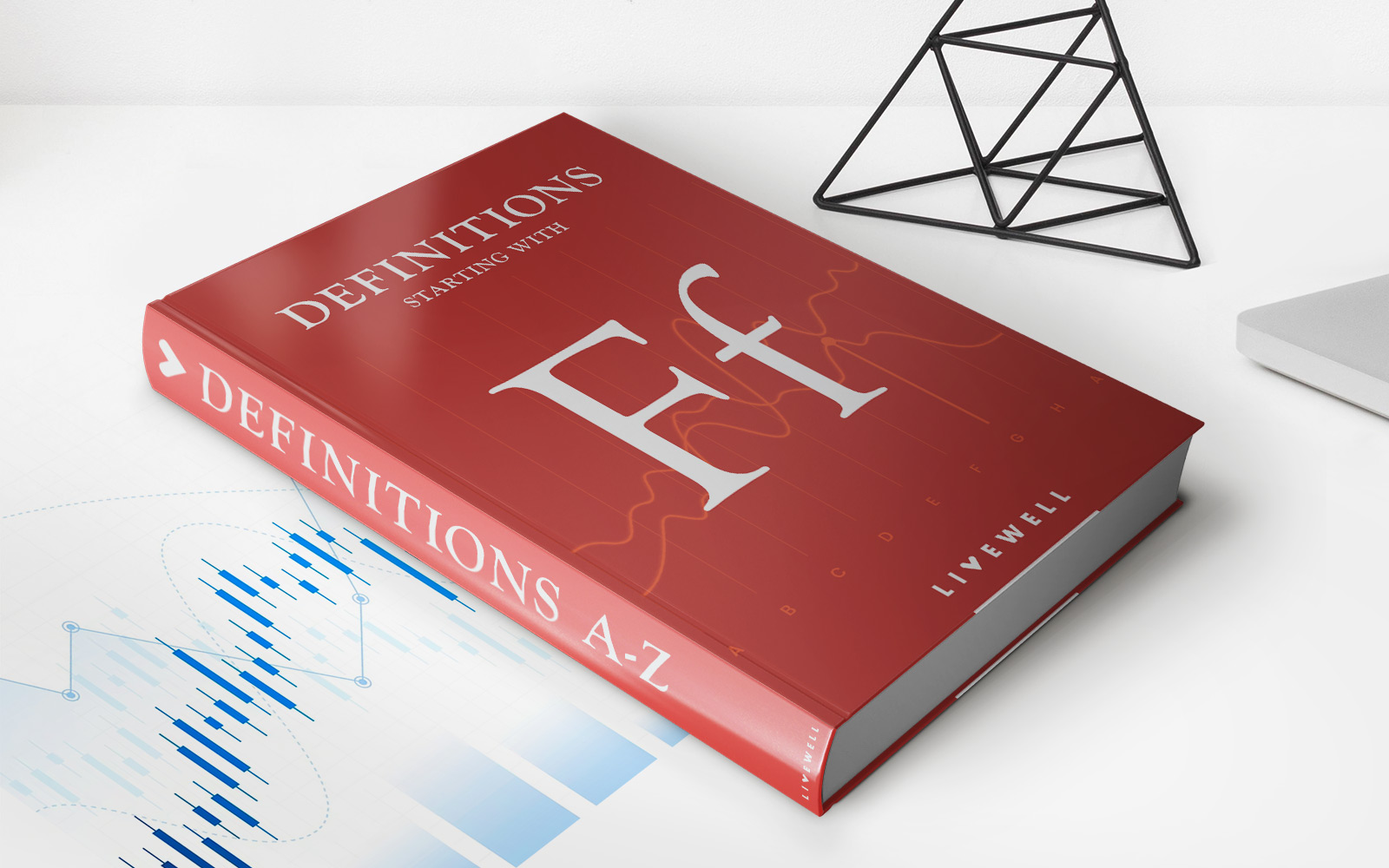

Finance
How Does A Private Pension Work
Published: November 27, 2023
Learn how private pension plans work in the finance sector and the benefits they offer for retirement planning. Find out everything you need to know!
(Many of the links in this article redirect to a specific reviewed product. Your purchase of these products through affiliate links helps to generate commission for LiveWell, at no extra cost. Learn more)
Table of Contents
- Introduction
- What is a private pension?
- Types of private pensions
- How does a private pension work?
- Contributions to a private pension
- Investment options for a private pension
- Tax implications of private pensions
- Withdrawals and benefits from a private pension
- Advantages of a private pension
- Disadvantages of a private pension
- Considerations before opting for a private pension
- Conclusion
Introduction
Welcome to the world of private pensions! In this article, we will explore the intricacies of private pensions, how they work, and the various aspects to consider when opting for one. Whether you’re just starting to think about retirement or you’re already on the path, understanding private pensions is crucial for securing a stable financial future.
So, what exactly is a private pension? Simply put, a private pension is a retirement savings plan that individuals can set up and contribute to, in addition to any workplace or government-related pension schemes. It serves as a supplementary income stream during retirement, providing individuals with financial security and independence.
Unlike workplace pensions, private pensions are not associated with any specific employer. They are entirely controlled by the individual, giving them greater flexibility and choice when it comes to contributions and investment options. Private pensions are typically managed by pension providers or financial institutions.
Private pensions come in various forms, each with its own pros and cons. The most common types include personal pensions, self-invested personal pensions (SIPPs), and stakeholder pensions. We’ll explore these types in detail further along in this article.
Understanding how a private pension works is essential for making informed decisions about your retirement savings. In a nutshell, when you contribute to a private pension, your money is invested, usually in a range of assets such as stocks, bonds, and funds, with the aim of growing your retirement fund over time. The growth of your pension fund will depend on the performance of your chosen investments.
Contributions to a private pension can be made regularly or as lump sums, depending on your financial circumstances and preferences. The amount you contribute will determine how much you’ll have available for retirement.
Private pensions also have tax advantages. Contributions made to a private pension are typically tax deductible, meaning you can reduce your taxable income and potentially pay less tax. Additionally, any investment growth within the pension fund is tax-free, allowing your retirement savings to grow more efficiently.
In the following sections, we’ll delve deeper into the mechanics of private pensions, exploring contribution options, investment avenues, tax implications, withdrawal rules, and the advantages and disadvantages of private pensions. By the end of this article, you’ll have a comprehensive understanding of private pensions and be better equipped to make decisions about your retirement savings.
What is a private pension?
A private pension, also known as a personal pension, is a retirement savings plan that individuals can set up and contribute to on their own. Unlike workplace pensions, which are provided by employers, private pensions are independent of any specific employment and offer individuals greater control and flexibility over their retirement savings.
Private pensions serve as a supplementary income source during retirement, providing individuals with financial security and independence. They are designed to help individuals build a nest egg that can support them financially when they are no longer working.
One of the key benefits of a private pension is that it allows individuals to save for retirement beyond what they may receive from workplace or government pension schemes. While these other schemes can provide a foundation of retirement income, a private pension offers the opportunity to build additional savings and potentially achieve a more comfortable retirement lifestyle.
Private pensions come in various forms, including personal pensions, self-invested personal pensions (SIPPs), and stakeholder pensions. These different types of private pensions offer varying degrees of flexibility and investment options, allowing individuals to tailor their retirement savings to their specific needs and goals.
With a personal pension, individuals make regular contributions to their pension fund, which is managed by a pension provider. The provider invests the contributions on behalf of the individual, aiming to grow the fund over time. When it comes to retirement, the individual can choose how to access the pension savings, whether as regular income, lump sum withdrawals, or a combination of both.
SIPPs, on the other hand, give individuals even greater control over their pension investments. With a SIPP, individuals can choose from a wide range of investment options, including stocks, bonds, funds, and other assets. This flexibility allows individuals to have a more hands-on approach to managing their retirement savings, though it also requires a greater level of knowledge and involvement in investment decisions.
Stakeholder pensions are a simplified version of private pensions that have certain requirements set by the government. They have low management charges and flexible contribution levels, making them accessible to a wider range of individuals.
Overall, private pensions provide individuals with the opportunity to take control of their retirement savings and build a secure financial future. They offer flexibility in terms of contributions, investment choices, and accessing the pension funds during retirement. By understanding the different types of private pensions and how they work, individuals can make informed decisions and take proactive steps toward a comfortable retirement.
Types of private pensions
Private pensions come in various forms, each offering different features and benefits. Understanding the different types can help individuals choose the one that best suits their needs and goals. Here are the most common types of private pensions:
- Personal Pensions: Personal pensions are the most straightforward type of private pension. They are typically provided by insurance companies and pension providers. With a personal pension, individuals make regular contributions, and the pension provider manages the investments on their behalf. The funds are invested in a range of assets, such as stocks, bonds, and funds, with the aim of growing the pension fund over time. At retirement, individuals can typically choose between different options for accessing their pension savings, including regular income or lump sum withdrawals.
- Self-Invested Personal Pensions (SIPPs): SIPPs offer individuals greater control and flexibility over their investments. With a SIPP, individuals can choose and manage their own investments, including stocks, shares, funds, and other assets. This level of control comes with more responsibility and requires individuals to have a good understanding of investing. SIPPs are popular among those who want to take a hands-on approach to their retirement savings and have the knowledge and expertise to make informed investment decisions.
- Stakeholder Pensions: Stakeholder pensions are a simple and low-cost option for individuals who want a more accessible private pension. These pensions have certain requirements set by the government, including low management charges and flexible contribution levels. Stakeholder pensions are designed to be suitable for a wide range of individuals, providing a basic and affordable option for retirement savings.
- Company Pensions: Some employers offer company pension schemes as a benefit to their employees. These schemes can vary in terms of their structure and benefits. Company pensions can be defined benefit (where the amount received is based on salary and years of service) or defined contribution (where the amount received is based on investment returns). While company pensions are not under individual control, they can be a valuable addition to private pensions and provide an additional source of retirement income.
Each type of private pension has its own advantages and considerations. Personal pensions offer simplicity and professional management, while SIPPs provide greater investment control. Stakeholder pensions are suitable for those on a budget, and company pensions can offer additional benefits. It is important to carefully compare and choose the type of pension that aligns with your financial goals, risk tolerance, and personal circumstances.
Now that we’ve explored the different types of private pensions, let’s delve into how these pensions work and the key elements to consider when building your retirement savings.
How does a private pension work?
A private pension is a retirement savings plan that individuals can set up and contribute to on their own. It allows individuals to build a nest egg that will provide them with financial security during retirement. Let’s take a closer look at how a private pension works:
Contributions: To start a private pension, individuals make regular contributions, which can be monthly, quarterly, or annually. The amount and frequency of contributions depend on personal financial circumstances and retirement goals. These contributions are invested in a pension fund, which will grow over time.
Investments: The pension fund is invested to generate returns and grow the individual’s savings. The investments can include a variety of assets, such as stocks, bonds, funds, and other financial instruments. The objective is to achieve growth over the long term, taking into account the individual’s risk tolerance and investment goals.
Management: The management of the pension fund is typically handled by a pension provider or financial institution. They are responsible for choosing and managing the investments within the fund. Individuals have the option of selecting a default investment strategy offered by the provider or taking a more active role in managing their investments, depending on the type of private pension they have.
Growth: The growth of the pension fund depends on the performance of the investments. Over time, the contributions, combined with the investment returns, will accumulate and increase the value of the pension fund. It’s important to regularly review and monitor the performance of the investments to ensure they align with the individual’s retirement goals.
Tax advantages: One of the benefits of private pensions is the tax advantages they offer. Contributions made to a private pension are typically tax deductible, meaning they can reduce the individual’s taxable income. This helps to lower the overall tax liability. Additionally, any investment growth within the pension fund is tax-free, allowing the savings to grow more efficiently.
Retirement options: When it’s time to retire, individuals have several options for accessing their private pension savings. They can choose to receive a regular income stream, known as an annuity, which provides a fixed monthly payment. Alternatively, individuals may opt for flexible drawdown, where they can take out lump sum withdrawals as needed while leaving the remaining funds invested.
Considerations: There are various factors to consider when setting up and managing a private pension. These can include the type of pension chosen, the level of contributions, investment options, and risk tolerance. It’s important to regularly review and adjust the pension plan as personal circumstances and retirement goals change over time.
A private pension provides individuals with the opportunity to take control of their retirement savings and build a secure financial future. By contributing regularly, making sound investment choices, and seeking professional advice when needed, individuals can maximize their pension savings and enjoy a comfortable retirement.
Contributions to a private pension
Contributing to a private pension is a key aspect of building a secure nest egg for your retirement. The amount and frequency of contributions you make will directly impact the growth and size of your pension fund. Let’s take a closer look at contributions to a private pension:
Regular Contributions: Most private pensions allow individuals to make regular contributions, which can be monthly, quarterly, or annually. Setting up a regular contribution plan ensures consistent savings towards your retirement over a long period of time. It is important to choose a contribution amount that is affordable and sustainable based on your income and financial obligations.
Lump Sum Contributions: In addition to regular contributions, individuals may have the option to make lump sum contributions to their private pension. This allows you to make larger one-time payments into your pension fund, which can give your savings an extra boost. Lump sum contributions are often made in situations where you receive unexpected windfalls, such as bonuses, inheritance, or the sale of assets.
Contribution Limits: Private pensions have contribution limits set by the government to ensure fairness and to control the tax advantages associated with pension savings. These limits are regularly reviewed and adjusted. It’s crucial to stay informed about the current limits to maximize your contributions while staying within the legal boundaries. Exceeding the set limits can result in tax penalties or loss of tax advantages.
Employer Contributions: Some private pensions allow individuals to receive contributions from their employer. This can come in the form of matching contributions, where the employer matches a percentage of the employee’s contributions, or through additional employer contributions. Taking advantage of employer contributions is a valuable way to boost your pension savings. Make sure to understand your employer’s pension scheme and any matching contributions available.
Automatic Enrolment: In some countries, employers are legally required to automatically enroll eligible employees into a workplace pension scheme. This is designed to encourage individuals to save for retirement. By participating in an automatic enrolment scheme, individuals will have contributions deducted directly from their salary and paid into their private pension. It’s important to understand the terms and conditions of the scheme and consider whether additional contributions are needed to meet your retirement goals.
Flexibility: Private pensions offer flexibility when it comes to contributions. You have the ability to increase or decrease your contributions over time, depending on your financial circumstances and retirement goals. It’s recommended to review your contribution levels regularly to ensure they align with your changing financial situation and long-term objectives.
Contributing regularly and consistently to a private pension is a vital component of building a substantial retirement fund. By maximizing contributions within the allowable limits, taking advantage of employer contributions, and considering both regular and lump sum contributions, you can take meaningful steps toward securing a comfortable retirement.
Investment options for a private pension
When it comes to a private pension, one of the key factors that can greatly impact the growth and performance of your retirement savings is the choice of investment options. Private pensions offer a wide range of investment choices, allowing individuals to tailor their portfolio according to their risk tolerance and long-term goals. Let’s explore some common investment options for a private pension:
Stocks: Investing in stocks allows individuals to become partial owners of companies. Stocks have the potential for higher returns but also come with higher risks. It is important to diversify your stock investments across different industries and geographic regions to reduce the impact of market volatility.
Bonds: Bonds are debt instruments issued by governments or companies. Investing in bonds provides a fixed income stream in the form of interest payments. Bonds tend to be less volatile than stocks and are considered more conservative investments. They offer a more stable income but may have lower returns compared to stocks.
Mutual Funds: Mutual funds pool money from multiple investors and invest in a diversified portfolio of assets, such as stocks, bonds, and other securities. They are managed by professional fund managers who make investment decisions on behalf of the investors. Mutual funds provide instant diversification and are suitable for individuals who prefer a hands-off approach to investing.
Exchange-Traded Funds (ETFs): ETFs are similar to mutual funds but are traded on stock exchanges like individual stocks. They offer the diversification of a mutual fund with the flexibility of trading throughout the day. ETFs can track specific indices or provide exposure to specific sectors, making them suitable for individuals who want targeted investment options.
Real Estate Investment Trusts (REITs): REITs are investment vehicles that allow individuals to invest in real estate assets, such as commercial properties, residential buildings, or infrastructure projects. REITs provide a regular income stream through rental yields and can offer potential capital appreciation. They provide a way to diversify a pension portfolio beyond traditional stocks and bonds.
Cash and Cash Equivalents: This category includes savings accounts, money market funds, and short-term government securities. Cash and cash equivalents provide stability and easy access to funds but tend to offer lower returns compared to other investment options. This option is suitable for individuals with a low risk tolerance and those who prioritize capital preservation.
Target-Date Funds: These funds are designed to automatically adjust their asset allocation based on the investor’s expected retirement date. They start with a higher allocation in equities and gradually shift towards fixed-income investments as the retirement date approaches. Target-date funds provide a set-it-and-forget-it approach for individuals who want a simplified investment strategy.
It’s important to consider your risk tolerance, investment knowledge, and time horizon when selecting investment options for your private pension. Diversification across different asset classes can help spread risk and potentially optimize returns. It is recommended to regularly review and rebalance your portfolio to ensure it aligns with your changing financial circumstances and retirement goals.
Seeking professional advice from a financial advisor or pension provider can help you navigate the investment options available and create a pension investment strategy that is tailored to your specific needs and objectives.
Tax implications of private pensions
Understanding the tax implications of private pensions is crucial for maximizing the benefits of your retirement savings. Private pensions offer several tax advantages that can help individuals grow their pension fund more efficiently. Let’s explore the key tax considerations related to private pensions:
Tax Relief on Contributions: One of the main advantages of private pensions is the tax relief available on contributions. In many countries, contributions made to private pensions are eligible for tax relief, meaning you can deduct the amount of your contributions from your taxable income. This reduces your overall tax liability and allows you to maximize your retirement savings. The tax relief is typically subject to certain limits, so it’s important to stay informed about the current regulations in your country.
Tax-Free Growth: Another tax advantage of private pensions is that the investments within the pension fund grow tax-free. Any growth or investment income generated within the pension fund is not subject to income tax or capital gains tax. This allows your pension savings to grow more efficiently over time, as you won’t have to pay tax on the returns generated by your investments.
Income Tax on Withdrawals: While contributions and investment growth within a private pension enjoy tax advantages, the withdrawals from the pension fund are typically subject to income tax. When you reach retirement age and start taking income from your pension, the withdrawals are treated as taxable income. The amount of tax you pay on withdrawals will depend on your income tax rate at the time of withdrawal. It’s important to plan your withdrawals strategically to minimize the tax impact and maximize your pension income.
Death Benefit Taxation: In some cases, if a pension holder passes away before reaching retirement age, the pension fund may be passed on to their beneficiaries. The tax treatment of these death benefits can vary depending on the jurisdiction and the individual circumstances. It’s important to understand the rules and regulations related to death benefits to ensure proper planning and minimize any potential tax liabilities for your beneficiaries.
Pension Lifetime Allowance: Some countries have a limit on the total amount of pension savings that can be accumulated without incurring additional taxes. This is known as the pension lifetime allowance. If the value of your pension fund exceeds the lifetime allowance threshold, you may be subject to additional taxes. It’s important to monitor the growth of your pension fund and consider any potential tax implications related to the lifetime allowance.
It’s essential to consult with a tax advisor or pension specialist to understand the specific tax rules and regulations applicable to private pensions in your country. They can provide guidance on tax planning strategies and help you optimize the tax benefits of your private pension. By staying informed and making conscious decisions about your contributions, investments, and withdrawals, you can navigate the tax landscape and make the most of your private pension for a financially secure retirement.
Withdrawals and benefits from a private pension
After years of diligently contributing to a private pension, the time will come when you can start reaping the rewards. Understanding how withdrawals and benefits work from a private pension is essential for managing your retirement income. Let’s explore the key aspects of accessing the funds from your private pension:
Retirement Options: When you reach the eligible retirement age, typically between 55 and 65 years old, you have several options for accessing your private pension. The most common options include taking a tax-free lump sum, purchasing an annuity, using flexible drawdown, or a combination of these.
Tax-Free Lump Sum: Many private pensions allow you to take a tax-free lump sum from your pension fund. This lump sum is typically a percentage of the total pension value, known as the “Pension Commencement Lump Sum.” The specific percentage allowed as a tax-free lump sum varies by country and pension provider. Taking a lump sum can provide individuals with a cash injection to fund specific expenses or goals in retirement.
Annuities: An annuity is a financial product that provides a guaranteed income stream for life or a fixed period. By purchasing an annuity, you exchange some or all of your pension fund for a reliable income. Annuities offer stability and certainty, as they provide a regular income regardless of market fluctuations. You can choose various types of annuities, such as lifetime annuities or fixed-term annuities, depending on your preferences and financial objectives.
Flexible Drawdown: With flexible drawdown, individuals have the ability to access their pension savings as and when needed. This allows for greater flexibility in managing retirement income. Rather than purchasing an annuity or taking a lump sum, you can withdraw funds from your pension pot on an ad-hoc basis. Keep in mind that withdrawals from your pension pot are typically subject to income tax.
Death Benefits: If you pass away before utilizing your full pension fund, the remaining amount may be passed on to your beneficiaries. The rules regarding death benefits can vary by country and pension scheme. It’s important to understand the options available to your beneficiaries and the potential tax implications associated with inheriting a pension fund.
Considerations: When deciding on withdrawals and benefits from your private pension, it’s important to consider various factors. Evaluate your current financial situation, retirement goals, and expected income needs. Additionally, take into account your tax position and the potential impact of withdrawals on your tax liability. Consulting with a financial advisor or pension specialist can help you navigate the options and make informed decisions based on your individual circumstances.
Regular Monitoring: It’s recommended to regularly review and assess your private pension, especially as you approach retirement age. Keep track of the performance of your pension investments and consider adjusting your withdrawal strategy if needed. Additionally, stay informed about any changes in tax laws and retirement regulations that may affect your private pension.
Withdrawals and benefits from a private pension are significant milestones in your retirement journey. By understanding your options, considering your financial goals, and seeking professional guidance, you can make the most of your pension fund and ensure a comfortable and secure future.
Advantages of a private pension
Private pensions offer several advantages that make them an attractive option for building a secure retirement income. Understanding these advantages can help individuals make informed decisions about their retirement savings. Let’s explore some of the key advantages of a private pension:
Control and Flexibility: One of the significant advantages of a private pension is the control and flexibility it provides. Unlike workplace pensions, which are tied to a specific employer, private pensions are individually owned and managed. Individuals have the freedom to choose their contribution amounts, investment options, and retirement strategies to align with their unique financial goals and circumstances.
Supplementary Income: Private pensions serve as a supplementary income source during retirement. While workplace and government pension schemes provide a foundation for retirement income, private pensions allow individuals to build additional savings to enhance their financial security. With a private pension, you can bridge any income gaps and maintain your desired lifestyle during retirement.
Tax Advantages: Private pensions offer tax advantages that can boost your retirement savings. Contributions made to a private pension are typically tax deductible, which reduces your taxable income. Additionally, any investment growth within the pension fund is tax-free, allowing for more efficient growth of your savings. These tax advantages can help you maximize your retirement funds and potentially reduce your overall tax liability.
Investment Choices: Private pensions provide individuals with a wide range of investment options. From stocks and bonds to mutual funds and real estate investment trusts (REITs), individuals can diversify their pension investments to manage risk and potentially increase returns. Having control over your investment choices allows you to align your pension fund with your risk tolerance and investment preferences.
Employer Contributions: In some cases, employers may provide a private pension as part of their employee benefits package. This can include matching contributions, where the employer matches a percentage of the employee’s pension contributions. Taking advantage of employer contributions can significantly boost your retirement savings and accelerate your journey towards a financially secure retirement.
Long-Term Growth Potential: Private pensions have the potential for long-term growth. By consistently contributing over time and making prudent investment decisions, individuals can benefit from compounding returns on their pension funds. This can help grow their retirement savings more rapidly and provide a substantial nest egg for the future.
Portability: Private pensions are portable, meaning they are not tied to a specific employer. If you change jobs or careers, you can continue contributing to your private pension or transfer your existing pension savings to a new pension scheme. This flexibility allows you to maintain control over your retirement savings, regardless of your employment situation.
It’s important to carefully consider the advantages and benefits of a private pension in the context of your own financial situation and retirement goals. By taking advantage of the control, flexibility, tax advantages, and investment opportunities offered by private pensions, you can proactively plan for a financially secure and comfortable retirement. However, it’s always advisable to seek professional advice or consult with a financial advisor to ensure you make the best decisions for your individual needs and circumstances.
Disadvantages of a private pension
While private pensions offer numerous advantages, it’s important to consider the potential disadvantages as well. Understanding the downsides of a private pension can help individuals make well-informed decisions about their retirement savings. Let’s explore some of the common disadvantages of a private pension:
Investment Risk: One of the key disadvantages of private pensions is the investment risk involved. Since individuals have control over their pension investments, they also bear the risk of market fluctuations. The value of investments can go up or down, and poor investment decisions or market downturns can lead to a decrease in the pension fund’s value. It’s crucial to carefully consider your risk tolerance and investment knowledge when choosing investment options for your pension.
Management Fees: Private pensions often come with management fees or charges. Pension providers or financial institutions that manage your pension fund typically charge fees for their services. These fees can vary, and they can impact the overall growth of your pension fund. It’s important to carefully review and understand the fees associated with your private pension and consider their impact on your retirement savings.
Limited Access to Funds: Private pensions are designed specifically for retirement savings, so accessing the funds before reaching retirement age can be challenging. While there may be some exceptions for financial hardship or serious illness, early withdrawals from a private pension are generally discouraged and may come with penalties or tax implications. This lack of access can be a disadvantage for individuals who may need the funds for unexpected expenses or emergencies.
Uncertain Future Regulations: Future changes in pension regulations can pose a challenge for private pension holders. Government policies and regulations related to private pensions can change over time, potentially impacting tax benefits, contribution limits, retirement ages, and withdrawal rules. It’s important to stay updated with the current regulations and be prepared to adapt your retirement plans accordingly.
Market Volatility: Private pensions are subject to market fluctuations and economic conditions. If the market experiences significant downturns or volatility, it can negatively impact the performance of your pension investments. This can result in a decrease in the value of your pension fund and potentially impact the income you receive during retirement.
Inflation Impact: Inflation is a potential risk that can erode the purchasing power of your pension income over time. If the rate of inflation exceeds the rate of return on your pension investments, the real value of your pension income can decrease. It’s crucial to consider strategies to mitigate the impact of inflation and ensure your retirement income keeps pace with the rising cost of living.
Complexity and Responsibility: Managing a private pension requires an understanding of investment markets, regulations, and retirement planning. It can be complex and time-consuming, especially for individuals who are not familiar with financial matters. The responsibility of making investment decisions and navigating the pension landscape rests on the individual, requiring ongoing education and awareness of developments in the field.
While it’s important to be aware of the potential disadvantages of a private pension, it’s also essential to consider them in the context of your own financial goals and circumstances. The drawbacks mentioned should not discourage individuals from utilizing private pensions, but rather encourage them to seek professional advice, stay informed, and carefully manage their retirement savings to mitigate potential risks and maximize the benefits of a private pension.
Considerations before opting for a private pension
Before deciding to opt for a private pension, it’s important to carefully consider various factors to ensure it aligns with your financial goals and circumstances. Here are some key considerations to keep in mind:
Financial Situation: Assess your current financial situation, including your income, expenses, and existing savings. Consider whether you have sufficient disposable income to contribute regularly to a private pension without jeopardizing your other financial obligations. It’s crucial to strike a balance between saving for retirement and meeting your immediate financial needs.
Retirement Goals: Define your retirement goals and understand how a private pension can help you achieve them. Consider your desired lifestyle in retirement, including potential travel, hobbies, healthcare expenses, and other preferences. Having a clear vision of your retirement goals will help determine the level of savings needed and the appropriate contribution levels for your private pension.
Time Horizon: Assess your time horizon for retirement. The longer you have until retirement, the greater potential there is for your private pension to grow. Starting early allows you to take advantage of compounding returns and potentially accumulate a larger retirement fund. However, even if you’re getting closer to retirement age, it’s never too late to start saving for the future.
Investment Knowledge and Risk Tolerance: Consider your investment knowledge and comfort level with risk. Private pensions offer a range of investment options, each with varying levels of risk and potential returns. Evaluate your risk tolerance and determine whether you’re comfortable with more volatile investments like stocks or prefer more conservative options like bonds or cash equivalents.
Tax Implications: Understand the tax implications associated with private pensions. Research the tax rules and regulations in your country regarding contributions, investment growth, and withdrawals. Consider how these tax advantages can benefit your retirement savings and optimize your overall tax position.
Professional Advice: Seeking professional advice is highly recommended when considering a private pension. Consult with a financial advisor or pension specialist who can provide guidance based on your specific circumstances. They can help analyze your financial situation, recommend strategies, and offer insights into the best pension options and investment choices based on your individual goals and preferences.
Review Pension Provider: Assess the reputation and credibility of the pension provider or financial institution you plan to use for your private pension. Conduct research, read reviews, and evaluate their track record, customer service, and fees. Ensure that the provider is reputable, secure, and regulated by the appropriate authorities.
Flexibility and Accessibility: Consider your need for flexibility and access to the funds. Private pensions offer different withdrawal options, annuity choices, and levels of liquidity. Assess whether you require the flexibility to access funds for emergencies or if you prefer a more structured approach to retirement income.
Monitoring and Review: Regularly review and monitor your private pension to ensure it remains aligned with your goals and circumstances. Take advantage of annual statements and online tools provided by your pension provider to keep track of the performance of your investments and make adjustments if necessary.
By considering these factors, you can make an informed decision about opting for a private pension that aligns with your retirement goals. Taking the time to evaluate your financial situation, risk tolerance, and retirement objectives can set you on a path towards building a secure and comfortable future.
Conclusion
Private pensions play a vital role in securing a comfortable retirement and providing individuals with financial independence. By understanding how private pensions work and considering the advantages and disadvantages, you can make informed decisions about your retirement savings.
A private pension offers control, flexibility, and tax advantages. It allows you to build additional retirement savings beyond workplace or government pension schemes. With a wide range of investment options available, you can tailor your pension portfolio based on your risk tolerance and long-term goals. Employer contributions and the potential for long-term growth further enhance the benefits of a private pension.
However, it’s important to consider the potential downsides of private pensions. Investment risk, management fees, limited access to funds, and potential changes in regulations require careful consideration during the decision-making process. It’s essential to regularly monitor and review your private pension to ensure it remains in line with your financial goals and retirement objectives.
Before opting for a private pension, evaluate your financial situation, retirement goals, investment knowledge, and risk tolerance. Seek professional advice from a financial advisor or pension specialist to guide you in selecting the right pension scheme and investment options for your needs.
In conclusion, private pensions offer individuals the opportunity to take control of their retirement savings and build financial security for the future. Through careful planning, sound investment decisions, and ongoing monitoring, you can maximize the benefits of a private pension and enjoy a comfortable and fulfilling retirement.
